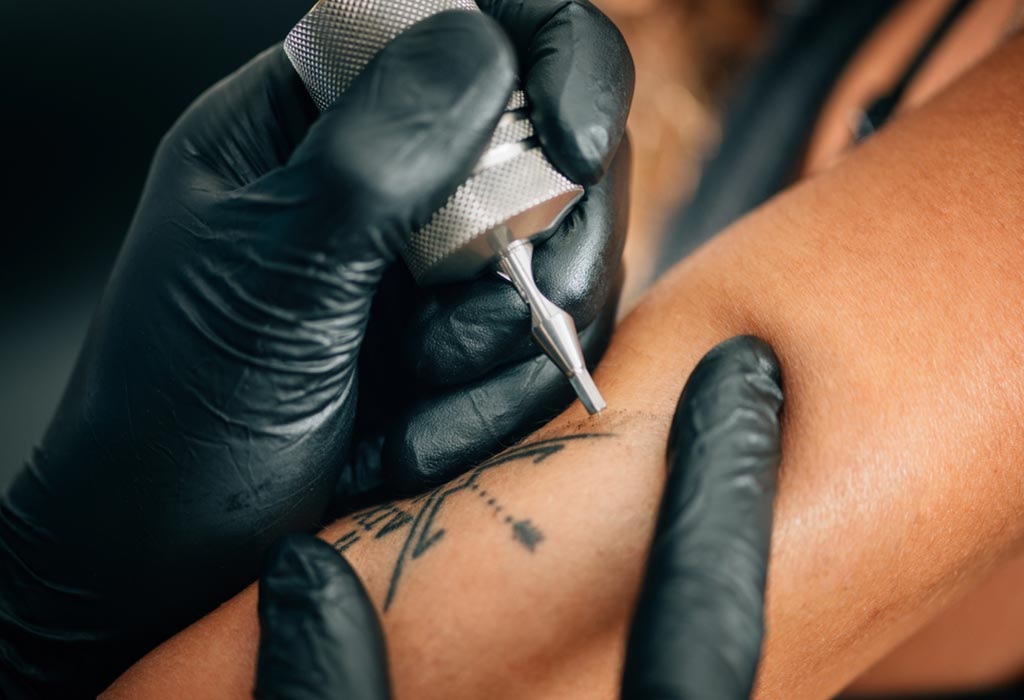Getting a tattoo is a big decision. It’s not just about the artwork you choose, but also the health and safety of the person doing the tattooing. Here are some risks to be aware of during and after getting a tattoo and some tips about how to avoid them.

What Problems Can Arise During the Tattoo Process?
If you’re getting a tattoo, there are several things that could go wrong. The most common problems include:
Infection: If the equipment used to create your tattoo is not sterile, you could develop an infection. Infections can cause swelling, redness, and pain. They can also lead to serious health problems if they’re not treated properly.
Allergic reactions: Some people are allergic to the ink or other materials used in tattoos. This can cause rashes, itching, and swelling. In rare cases, it can even lead to anaphylactic shock, which is a life-threatening reaction.
Scarring: Tattoos can cause scarring, especially if they’re not done properly. Scarring can be permanent and may be difficult to cover up with another tattoo.
Bleeding: Tattoos can cause bleeding, which can lead to bruising and swelling.
Severe Pain: Tattooing can be quite painful. If you have a low pain threshold, you may want to consider using the best numbing cream for tattoos in order to avoid inconvenience during the process.
What Are the Risks after Getting a Tattoo?
After getting a tattoo, it’s important to take care of the area to avoid infection. You should keep the area clean and dry, and apply an antibiotic ointment if recommended by your artist. It’s also important to avoid picking at or scratching the area, as this could lead to infection or scarring.
In some cases, people develop keloids, which are raised scars that can form around tattoos. Keloids are more common in people with darker skin, and they can be difficult to treat.
How to Avoid These Risks?
There are several things you can do to reduce your risk of developing problems during or after getting a tattoo.
Choose a reputable artist: Make sure the person doing your tattoo is a professional with a good reputation. Ask to see their portfolio, and make sure they’re using sterile equipment.
Consider your health: If you have a history of allergies or infections, you may be more likely to experience problems after getting a tattoo. Talk to your doctor before making the decision to get one.
Follow aftercare instructions: Be sure to follow all aftercare instructions from your artist, such as keeping the area clean and dry and applying ointment. This will help reduce your risk of infection and scarring.
Watch for signs of infection: If you notice any redness, swelling, or pus, see a doctor right away. Infections can usually be treated with antibiotics.
clean your tattoo regularly: Gently clean your tattoo with the best soap to wash tattoo, and apply a thin layer of ointment. Do this 2-3 times a day for the first week, then as needed after that.
Don’t pick or scratch: Avoid picking at or scratching your tattoo, as this can lead to infection or scarring.
If you take these precautions, you can help reduce your risk of developing problems during or after getting a tattoo. If you experience any problems after getting a tattoo, be sure to see a doctor right away. Infections and other complications can usually be treated if caught early.
Conclusion
Getting a tattoo is a big decision, and like with any other major life choice, there are risks involved. In this article, we’ve outlined some of the most common risks associated with tattoos – from infection to allergic reactions – as well as how to avoid them. By understanding what can go wrong and taking steps to prevent it, you can minimize your chances of experiencing any negative side effects. If you’re considering getting a tattoo, be sure to read through this article carefully so that you know what to expect. And if you have any questions or concerns, talk to your tattoo artist before going ahead with the procedure.
